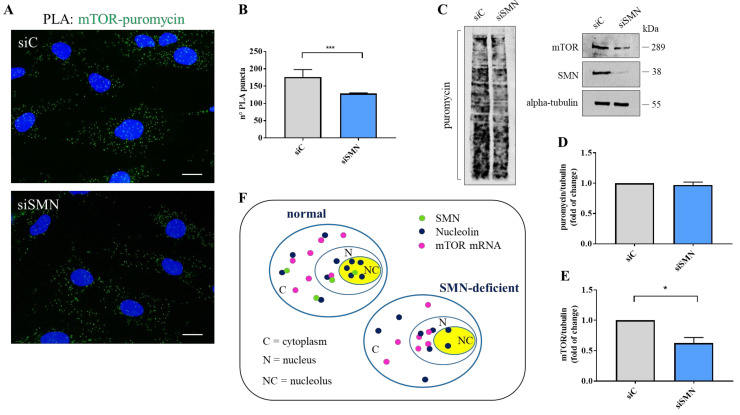Figure 5.
SMN knockdown reduces neo-synthesis of mTOR. (A) Puro-PLA assay was carried out using primary antibodies against puromycin and mTOR (mouse monoclonal and rabbit polyclonal, respectively). Representative images visualizing the subcellular distribution of newly synthesized mTOR protein (green dots) in both siC- and siSMN-transfected fibroblasts. Nuclei were stained with DAPI (blue). Scale bars, 10 µm. (B) Quantitative analysis of Puro-PLA puncta per cell (n = 20 cells were analysed for each sample. *** p < 0.0001 one-way ANOVA–Bonferroni’s multiple comparisons test (Mean ± s.d.; n = 3) (C) Evaluation of protein synthesis rate by SUnSET assay of both siC- and siSMN-transfected fibroblasts. Equal amounts of proteins were immunoblotted with the indicated antibodies. (D) Densiometric analysis of puromycin normalized to tubulin. No statistically significant changes are observed in hTERT-fibroblast transfected with siSMN1 siRNA (siSMN) compared with hTERT-fibroblast transfected with the control (siC). (Mean ± s.d.; n = 3; Student’s t-test.) (E). Densiometric analysis of mTOR normalized to tubulin. Statistically significant changes occurring in SMN-depleted cells (siSMN), compared to the control (siC). (Mean ± s.d.; n = 3; * p = 0.01, Student’s t-test). (F) Graphical representation for the mechanism by which SMN fine-tunes nucleolin and mTOR mRNA complexes.

